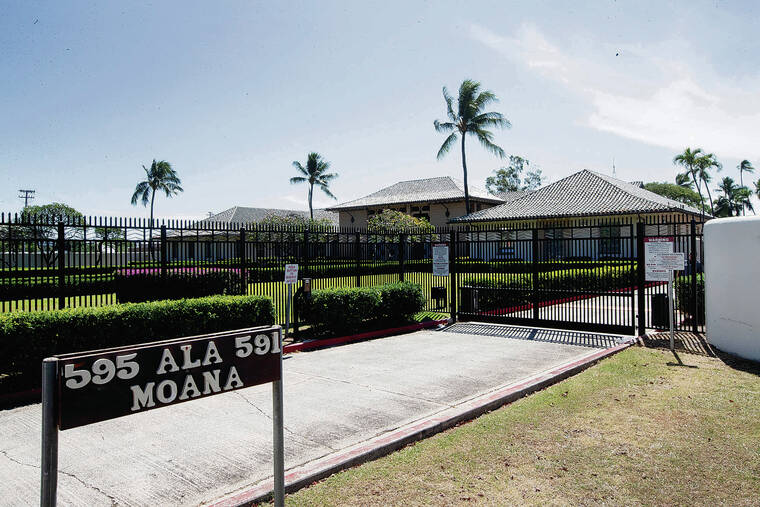It’s almost mango season for one of Agribusiness Development Corporations’s longest tenants, Wally Johnson, and he’s gearing up to expand and upgrade operations.
Johnson leases 13 acres in Kekaha from ADC, and has been raising mangoes on Kaua‘i for 20 years
In January he built the first of 10 planned greenhouses that protect 30 new mango starter trees from the heat that will eventually replace the existing trees that were planted 20 years ago. The greenhouse is 30 by 100 feet long and cost Johnson about $20,000 to have a contractor to build it for him.
“I plan to replace two trees a year,” Johnson said. “The greenhouse protects the starters from insects and birds. The trees will fruit earlier and longer because they will get more heat in the fall. And probably these trees will start producing fruit pretty good in three years.”
Johnson harvests 25,000 to 30,000 pounds of mangoes from the 180 mango trees on his property every year before they are distributed into the community or sold at the farmers’ markets. He has a team of 70 to 150 workers each season.
“We harvest every week for the next six months,” Johnson said. “The mangoes are raised without any pesticides or anything. They’re almost like an organic mango. We do put some fertilizer on it. We don’t spray them with anything.”
Johnson said the ADC is a big part of what they do out on the Westside of Kaua‘i.
“We find it easy to work with them, and they’re always trying to help out,” Johnson said. “It’s diversified farming. We want to thank the Agribusiness Development Corporation for all the stuff that they do to help us out.”
Johnson’s farm grows three different types of mangoes which include Rapoza, Keitt, and the Maniza mangoes that can be used to create new products or home treats.
“We found a guy that’s got about 1,000 recipes,” Johnson said. “For pies, cobblers, and for a lot of different drinks.”
Johnson also said that his mangoes have been in the Kilauea’s Community Supported Agriculture produce boxes during the pandemic, and he sells them to one distributor who divides them to all the farmers’ markets on Kaua‘i.
“We furnish mangoes out in Kilauea,” Johnson said. “We will probably do that again this year.”
Besides the support of the Kekaha Agriculture Association that manages all the infrastructure, Johnson also gets support from the Bowman Corporation and from his wife Jorinda Johnson, who harvests mangoes for the farmers’ markets.
“She and a couple of the girls who work for me do most all the harvesting,” Johnson said. “They’re careful about what they harvest. So they hire two or three girls to harvest almost everything. Then she sells them at farmers’ markets and has people that she distributes them.” In the future, Johnson hopes his mango farm can reach out to the community and be one of the sustainable farms on Kaua‘i.
“We’re trying to put up some other greenhouses to raise other crops,” Johnson said. “And so we’re hoping that we can provide jobs for like some of the younger people here that are more of a high-tech job — working in a greenhouse. We think that’s maybe the future of farming.”
•••
Stephanie Shinno, education and business reporter, can be reached at 245-0424 or sshinno@thegardenisland.com.









Thank you for helping to address food security on island. Incredibly important work!
awesome job….. mango cobbler sounds great !!
If I saw Mr Johnson’s mangoes at market I would buy them.
A special Kaua’i grown mangoes dessert should be on the menu of every hotel restaurant on the island!
Wow. There are many mango trees grown all over Kekaha. Plantation homes. I’m not sure what those people do with their many mangos. But if you spent $20,000 dollars just on the building to grow mangoes, then I would think many people buy it from you. That is a lot of money to spend just on the housing of those mangoes. Where I used to live, we had tons of coconuts. But that went nowhere. There is always some one to make it a go at it. And this happens to be mangoes. Does it bring you enough income to live on? Or is this a partnership with the state? ADC.
Most mango trees are the “common” variety and not worth much commercially. These are named hybrids with a much larger value at the time of sale.